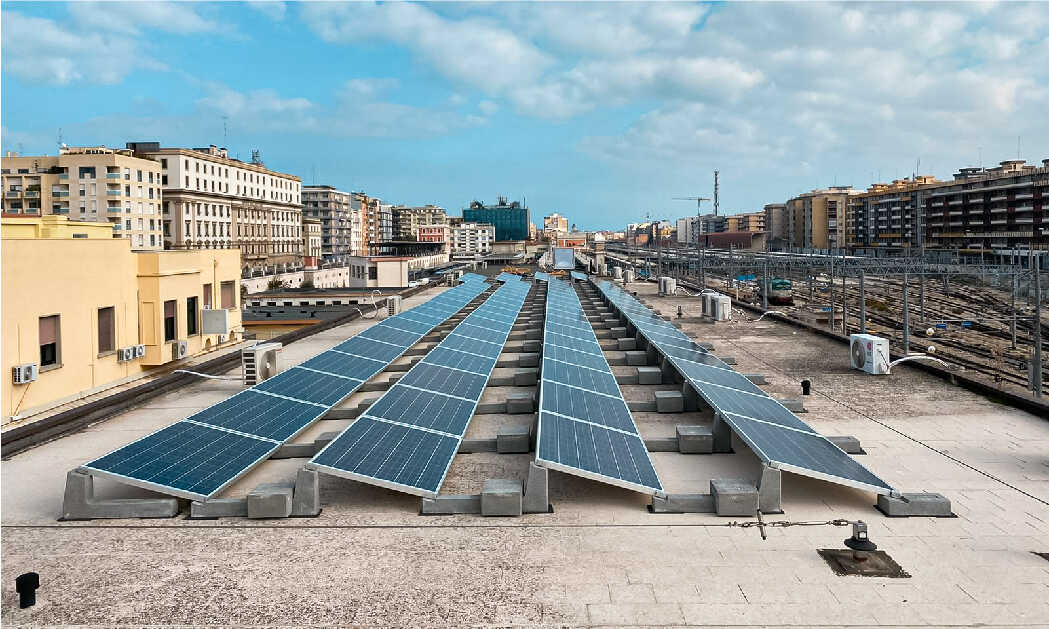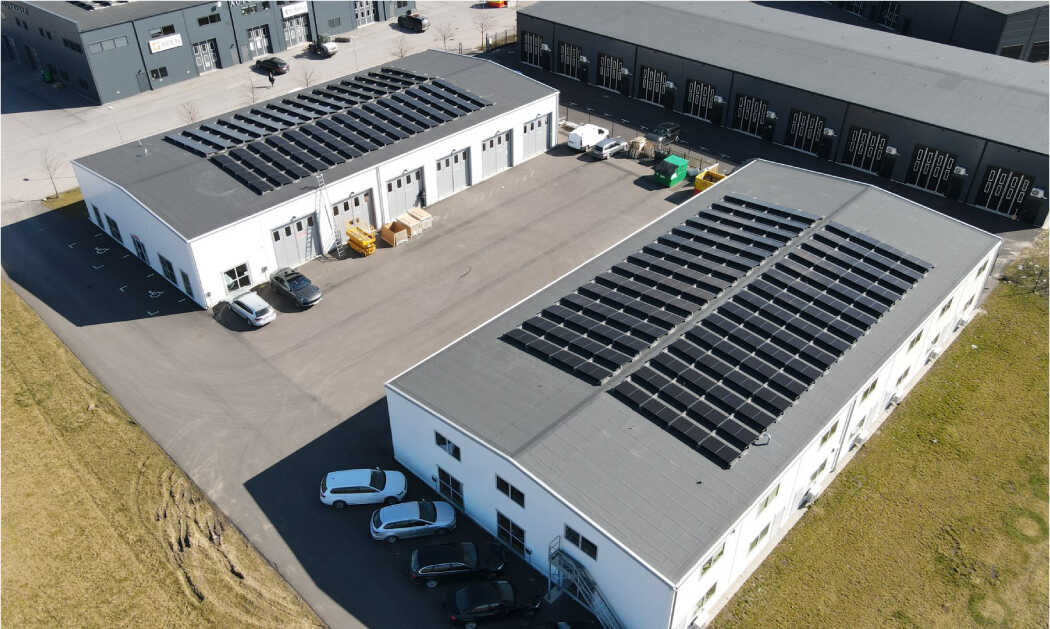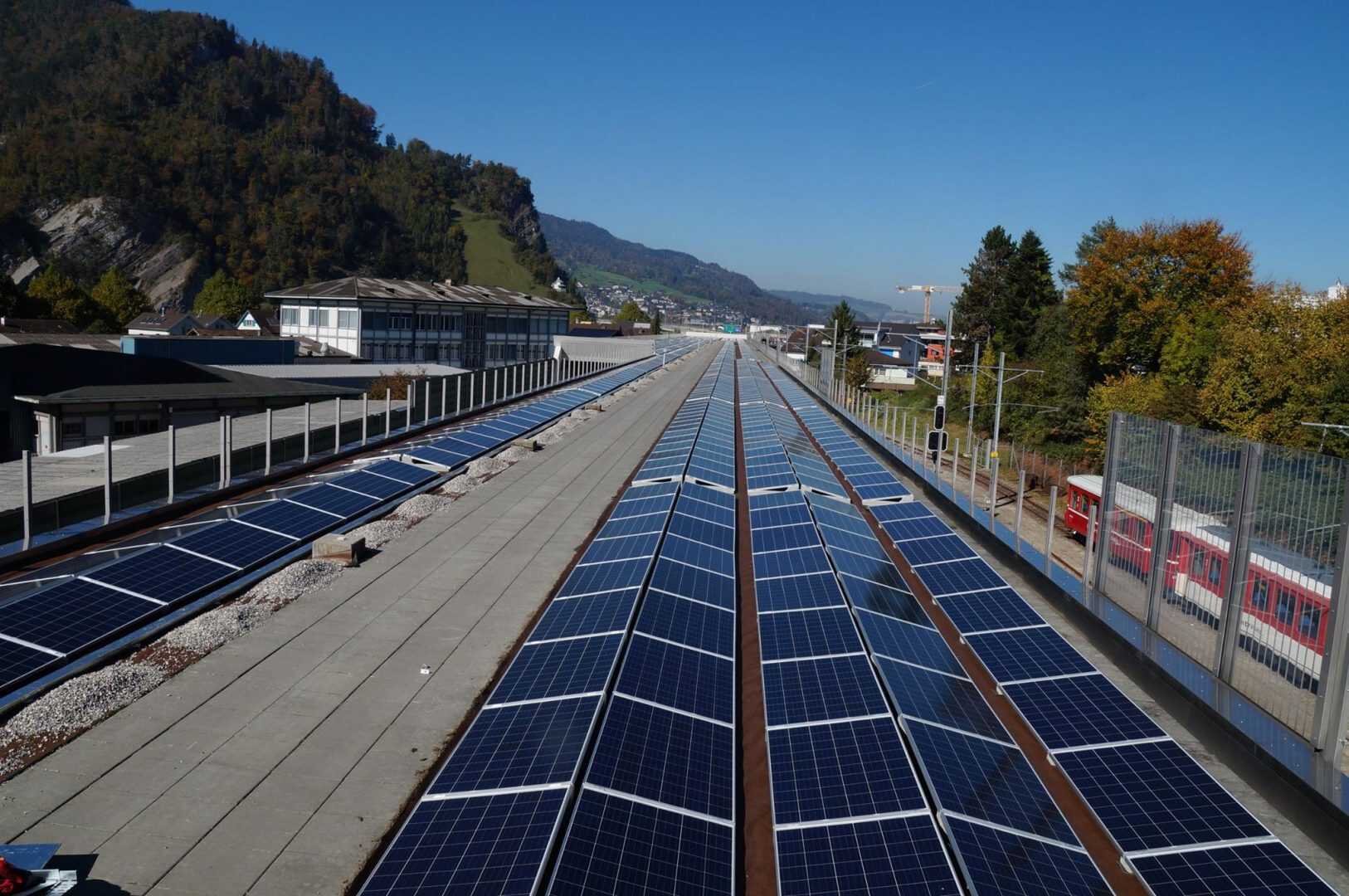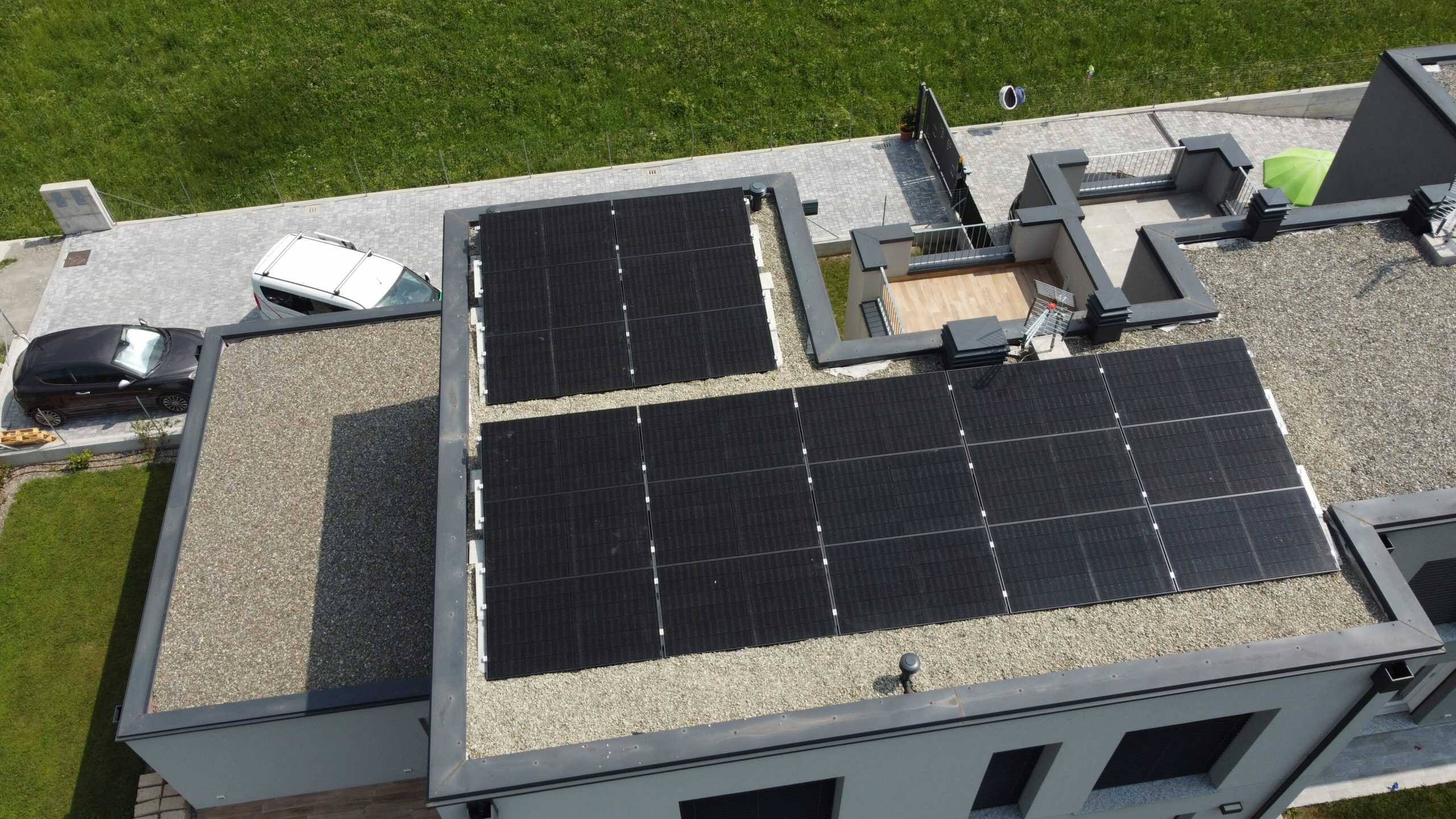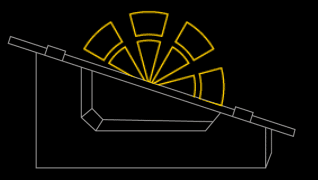Photovoltaic systems on flat roofs: characteristics and solutions
In order to set up an effective photovoltaic system, you must assess the type of roof or surface you will be installing it on.
The roofs of residential and industrial buildings can be divided into two macrocategories: flat roofs and pitched roofs. This is an important distinction that carries with it different requirements and procedures.
When do we define a roof as flat?
What are the defining characteristics of a flat roof? First of all, a flat roof is characterized, according to UNI standards, by a minimum slope that varies from -5° to a maximum of 5°. This amount of slope is necessary to allow water to flow towards the drains.
Impermeability of the flat surface is a crucial feature. Whatever the shape of the roof, its original function remains the same: to protect the indoor space from weather, heat, cold and especially rainwater.
Another important distinction is whether or not the roof is practicable. In this case, flat roofs are divided into:
- non-practicable flat roofs, which are generally not accessible to anyone except periodic maintenance workers
- practicable flat roofs, which are accessible to people due to adequate fall protection and flooring. Some examples of practicable flat roofs include terraces or driveway roofs where small vehicles can be used.
Compared to a pitched roof, a flat roof (whether walkable or not) allows for greater utilization of the surface area. In some cases the space is used as a living area, but more often it becomes the ideal setting in which to install a photovoltaic system.
Flat roof: requirements and characteristics
In recent decades, flat surfaces have become very common on residential buildings and are no longer used only for industrial buildings, shopping centres or factories.
In addition, over the years, more and more businesses, companies and households are choosing to self-produce clean energy to save money and help protect the environment.
But what makes a flat roof suitable for installation of a photovoltaic system?
Orientation
This is a crucial issue, as the plant’s solar irradiance and subsequent output are closely related to the positioning of the building.
Roof dimensions
The amount of available space has a significant effect on energy output.
More space means more panels. However, with the right support structures, even smaller spaces can be optimized to provide enough energy for a self-sustaining home.
Inclination
Solar panel inclination is a hotly debated topic: do higher inclinations really translate into more power? We have analysed this issue in detail in this in-depth article, which you can find here
Obstacles
The presence of obstacles in close proximity to the plant can significantly affect its output, so it is always important to take into account shaded areas created by adjacent trees or buildings, or even obstacles such as antennas and parapets on the roof.
These are all elements that the Sun Ballast technical department carefully evaluates before designing a photovoltaic installation, in order to ensure maximum energy output for the plant.
But let’s look in more detail at the benefits of using the right structure for the implementation of a photovoltaic system.
Sun Ballast supports for flat roofs
Sun Ballast, a patented structure made entirely of concrete, is the ideal support for the construction of photovoltaic systems on flat roofs. Since 2012 it has become an innovative alternative to traditional systems on the market, and is now the Italian market leader in the field of ballast production for photovoltaic systems.
Our structures, divided for convenience into four types (Connect, Standard, Vela and East-West) are adaptable to solar panels of any size and type. In addition, they can be modulated according to roofing needs and surface types, including sheathing, gravel, green roofs and paving, and even for ground installations.
Each of these surfaces has different characteristics that require attention and expertise to make sure that the roof remains undamaged. Sun Ballast systems are ideal precisely because, unlike traditional systems, they do not need to be fixed to the roof by means of drilling holes. In fact, the structures have a dual function of both support and ballast for photovoltaic panels, without needing to be permanently anchored to the surface.
The supports are fitted with M8 bushings to secure the modules, and then are simply placed on the ground. This key feature greatly reduces installation time, by as much as 70 percent. This means advantages in both technical and economic terms.
Get productive, efficient results
Before proceeding with a new project, the team of designers, architects and surveyors from the Sun Ballast technical office examines the roof’s needs and characteristics, evaluating the best way to proceed. Each consultation is carried out at the quotation stage free of charge, and offers the customer the best possible solution for the installation of a photovoltaic system on a flat surface.
Features and solutions for your flat roof PV system – Sun Ballast
Find out what are the requirements and characteristics of a flat roof to build a state-of-the-art photovoltaic system. Visit the site


